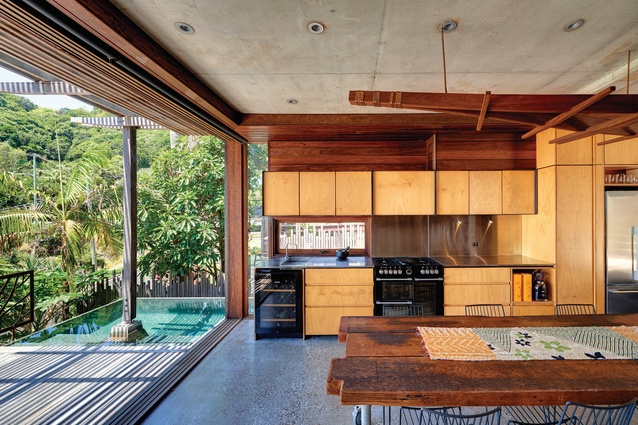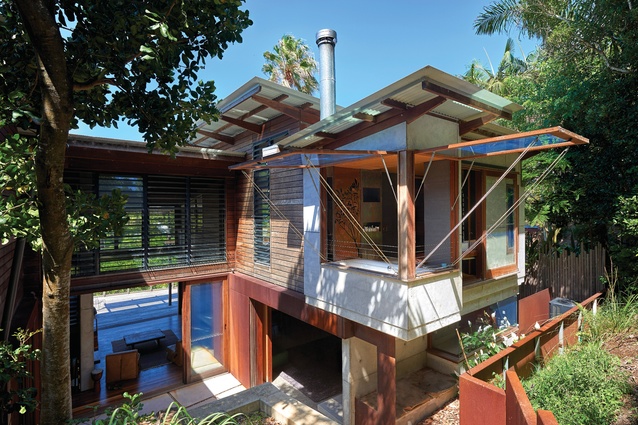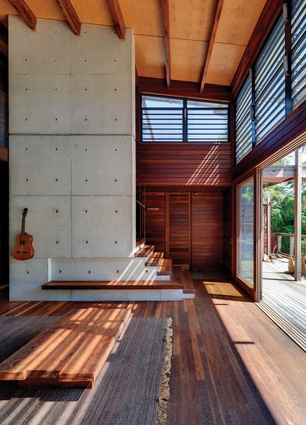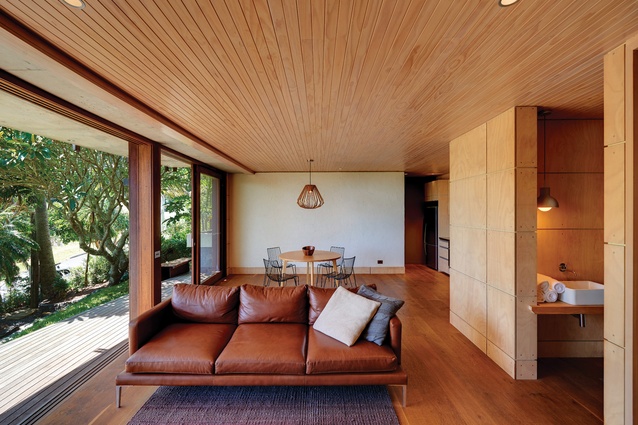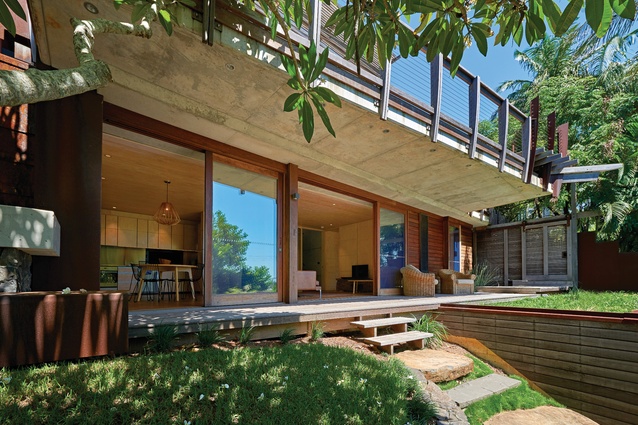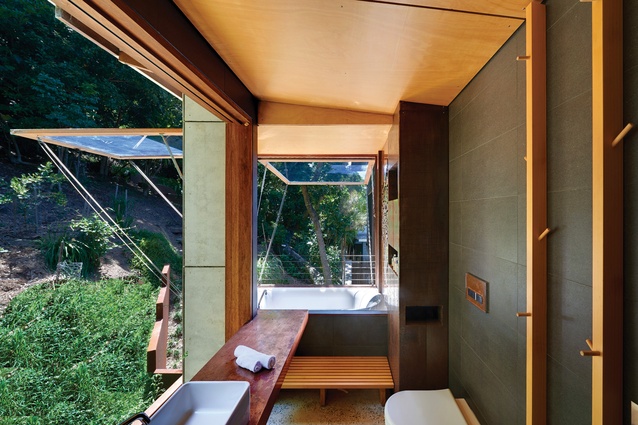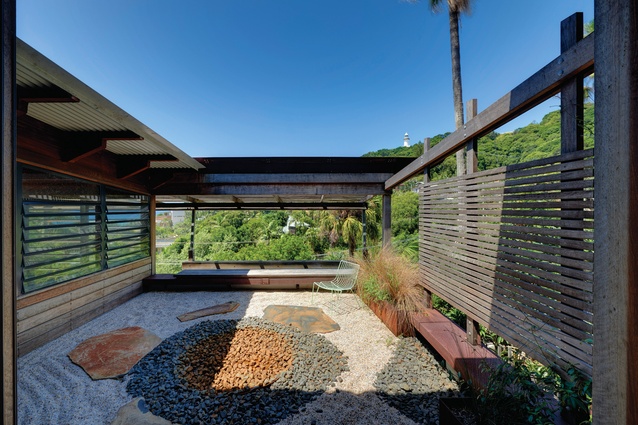Coastal spirit: Beach and Forest House
A small, embedded, cave-like dwelling in a spectacular location has been reworked and liberated by Troppo Architects to create a spiritual connection to site, and a home that’s “always forest, always beach, always lighthouse.”
Without doubt, Australia’s coastline is one of the most spectacular in the world. It’s a diverse, unique landscape of uncommon beauty, from our wildest bays to the urbanized shores of Sydney Harbour.
Yet few coastal idylls come close to Wategos Beach in far northern New South Wales. This small wedge of paradise – cupped leeward under the spiny Cape Byron ridgeline, wrapped by a lush subtropical reserve and facing due north to the Rubenesque-sweep of Byron Bay – offers that all-too-rare “where rainforest meets sea” moment. The sky, sea and bush encircle homes, a handful of small-scale hotels and one of the most heroic human-made structures in the country, the Cape Byron Lighthouse.
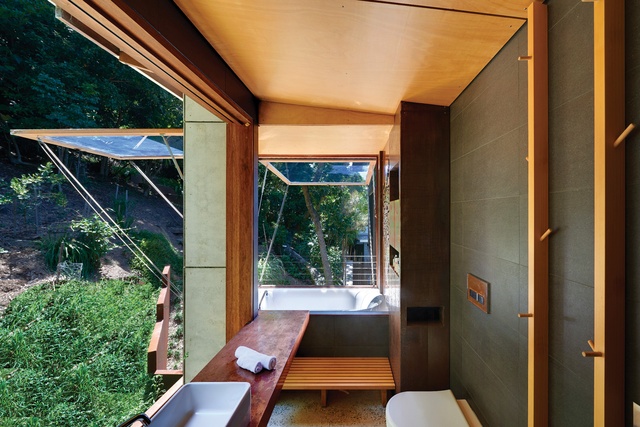
Creating a new building in such an environment comes, surely, with an irrefutable mandate: that it speak sensitively and appropriately of the place, history and climate in which it sits. The Beach and Forest House, designed by Troppo Architects for long-term clients, is an inspiring example.
The home began life as a simple, single-storey 1950s beach shack, straddling a steep, east–west running site on the western flank of Wategos. Pushed back and embedded cave-like into the hillside in the middle of the site, it acted as a barrier (physically, visually and emotionally) rather than conduit to the unspoilt bush beyond. While the owners, a couple with two young children, had enjoyed many happy holidays in the affectionately dubbed “Pink House,” they approached architect Phil Harris to design something that was better connected to its unique setting.
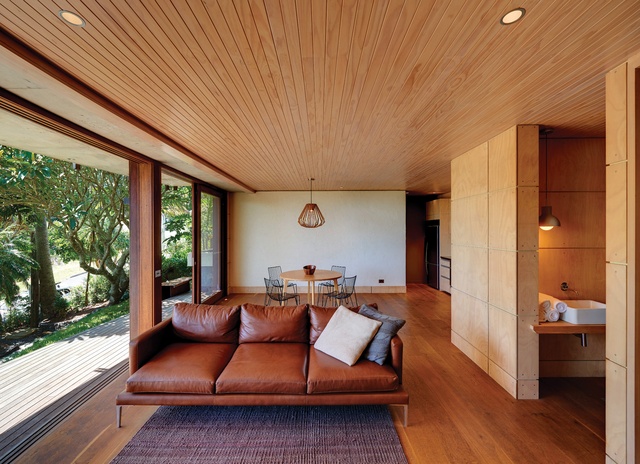
The clients wanted an open layout, protection from the sun and a breezeway – a house that was “always forest, always beach, always lighthouse,” in which the bush was equally (or even more) important as ocean views. It should have a pool, but “no white,” and “a separate space for Dad to come to stay.” It should be robust, with flexible, adaptive and fun kid spaces. The brief wasn’t prescriptive, they say, offering creative freedom and putting faith in Phil to find the “right” response.
The result is a house that speaks intuitively and legibly of “east-and-beach and west-and-forest, of platform edge and sure retreat.” As Phil says, a house that “enables the spirit of the headland reserve to flow down the valley, finding the beach.”
First impressions are of an understated home – a treehouse partially screened from the street, weathering on the site among frangipanis, pandanus and native plantings, sympathetically scaled to its neighbours and generously maintaining sightlines. Lasting impressions, on a poetic or spiritual level, are of a joyous series of ledges, more outdoor than in, and of generous platforms and eyries, opened wide and reaching back to the bush, while cantilevering seaward.
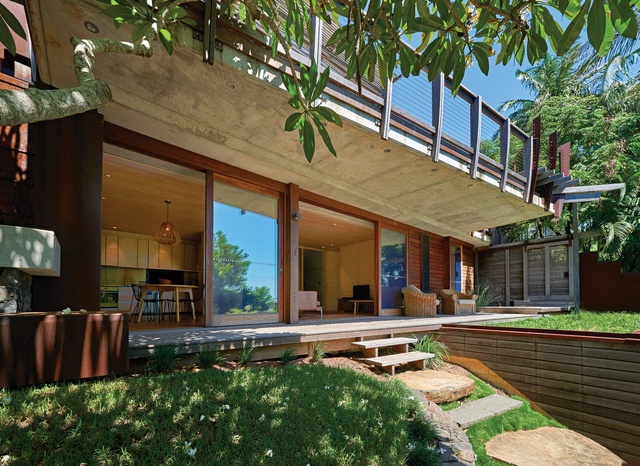
On a practical level, the home is constructed of three stacked concrete slabs accommodating a sequence of open timber indoor pavilions and outdoor decks, separated and joined by one pivotal feature – a soaring, central, two-storey breezeway open to bush and sea. Programmatically, the home offers a self-contained apartment at ground level, a living/dining/cooking platform above and two bedroom sanctuaries up top.
Respecting recent history, the ground-level Pink House was reworked as the separate apartment. Existing rear and side walls were used as “the lower level of something higher” – the eastern facade was replaced with a retractable wall of glazing, the roof skinned and massive Oregon timber beams re-used to frame the breezeway. Services were placed to the rear, including a delightful light-box bathroom that features a glass wall facing the living area to secure light. An oversized mirror is the only item screening the modest from public view. Centrally placed internal stairs are hidden behind a retractable wall and revealed only as needed.
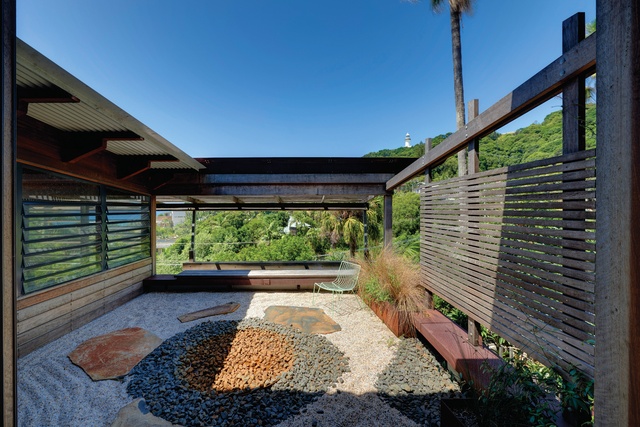
Across all levels, materials speak of the sea (oyster outside, pearl within), of driftwood and of the bush: warm spotted gum inside and out for cladding, panelling, battens, decks and screens; hoop pine on joinery, walls and ceilings; Corten and black steel defining and containing spaces, and as artworks and privacy screens; cool concrete underfoot and overhead and, at the very core of the house, as a strikingly beautiful triple-height blade wall. All settling and weathering with the site.
It’s on the living level that you’re most conscious of the spiritual intent of this house, and of the bush flowing “into” it and through to the sea. The breezeway is at the home’s heart, the double-height space offering connection and passage from the ridge behind, across the valley, to the lighthouse and neighbouring ridge. The house “speaks” to the lighthouse, and the lighthouse to the house, connecting with the ocean and valley in between. All indoor areas open to at least one outdoor space – the kitchen/dining/living area opening to a generous cantilevered north- and east-facing deck, a lap pool embedded into the forest, the breezeway, the rear courtyard and the bush beyond.
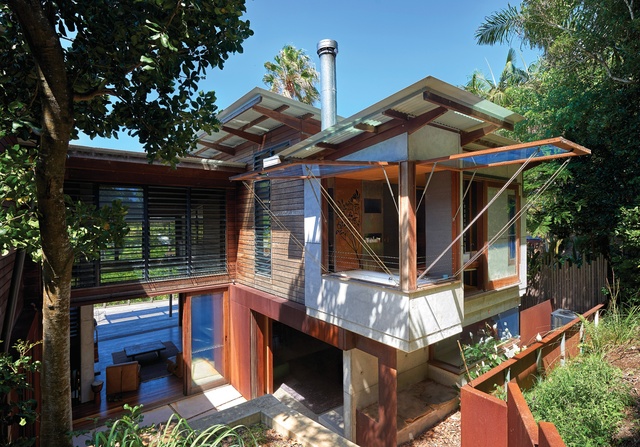
On the upper level, two bedroom towers house parents to the south and kids to the north, the spaces connected by a bridge to the rear of the breezeway. The main bedroom opens to the east, embracing a Japanese raked courtyard-cum-deck and the lighthouse (visible and celebrated night and day from both the deck and bedroom), and to the west, to a bathroom nirvana for those who savour the opportunity to bathe outdoors.
This is more bathhouse-in-the-trees than ensuite, with a floor-to-ceiling retractable window opening the western wall to the bush, and a deep bath bordered on two sides by oversized timber-framed glass servery windows. When fully open, this bathroom offers complete, serene immersion in nature.
Beach and Forest House speaks of living on the edge, enjoying prospect and refuge and joyous connections with family and friends, the bush, sea, sky and lighthouse. It also speaks of trust and faith, of evolving conversations between the owners, architect, builder and collaborating artists. As Phil says: “This is a very spiritual thing. You can really feel the forest run through the house, from forest down to the sea.”

